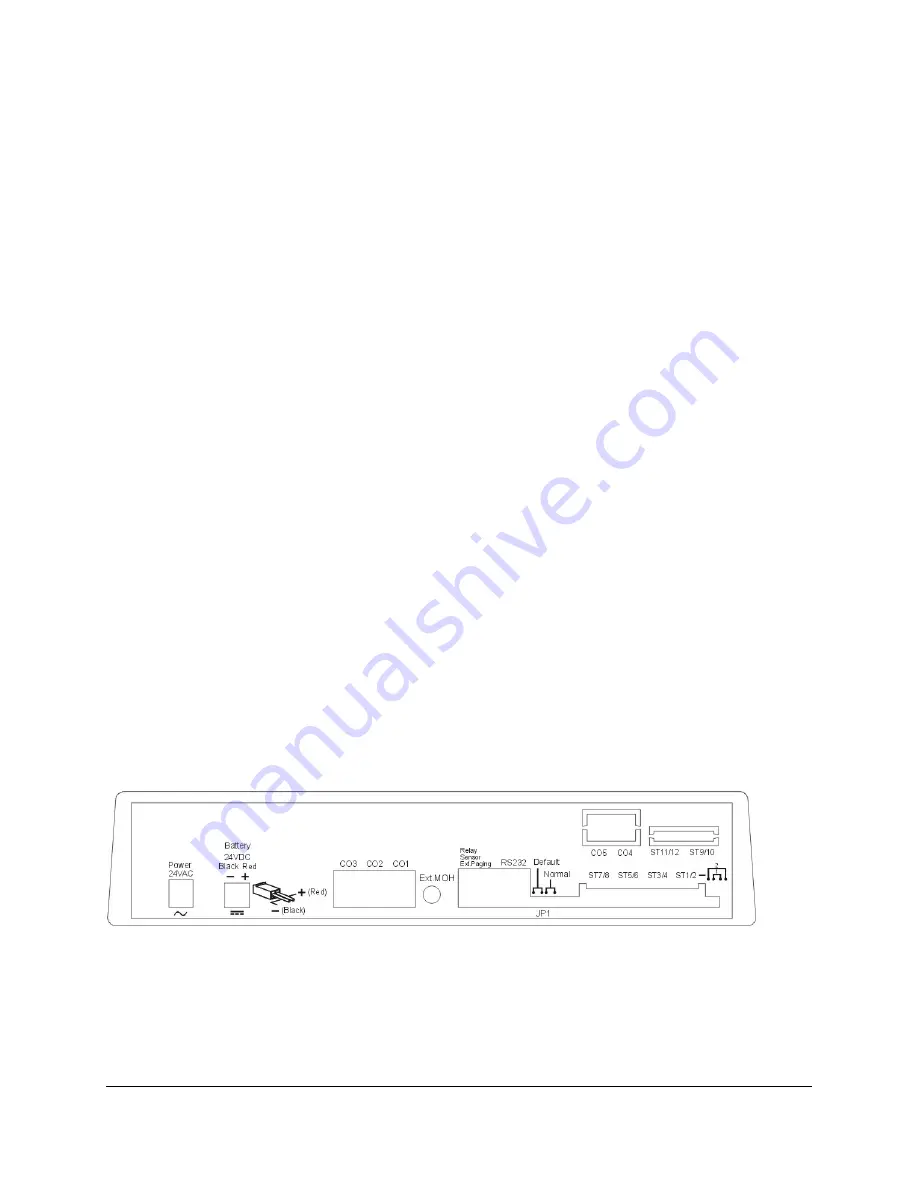
Page
32
Charging the Battery
The rechargeable batteries are automatically charged when the KSU is plugged in.
When System is in a full-load condition (seven CO Trunks and 16 Extensions all in use), the batteries
provide a minimum of 1 hour's consecutive use. Change the batteries every two years.
Installing or Replacing Batteries
Caution
To Reduce the Risk of Fire or Injury to persons, Read and Follow these Instructions.
1.
use only the following type and size batteries:
12 Volt 6.5 Amp/Hour "Gel-Cell" sealed batteries (2).
Dimensions, approximately 3 1/4" (H), 5 15/16" (W), 2 1/2" (D).
Power Sonic model PS660 or equivalent.
2.
Do not dispose of the batteries in a fire. The cell may explode.
3.
Check with local codes for possible special disposal instructions.
4.
Do not open or mutilate the batteries. Released electrolyte is corrosive and may
cause damage to the eyes or skin. It may be toxic if swallowed.
5.
Exercise care in handling batteries in order not to short the battery with conducting
materials such as rings, bracelets, and keys. The battery or conductor may overheat
and cause burns.
This product is defined as a secondary battery operated device. As such, the following
instructions should also be read and followed:
1. Charge the batteries provided with or identified for use with this product only in accordance with the
instructions and limitations specified in this manual.
2. Observe proper polarity orientation between the batteries and battery charger.
3. Do not mix old and new batteries in this product.
4. Do not mix batteries of different sizes or from different manufacturers in this product.
Before installing or replacing batteries, disconnect the battery supply unit to the KSU by removing the
polarized battery connector at the KSU. Due to the weight of the batteries, it is advised that the battery
cabinet be removed from the wall before working on it.
KSU Connecting (Main) Panel Layout
The following illustration should be used as a reference when connecting equipment to the Lynx KSU.
Refer to the wiring diagram located on the inside of the cable cover for all connections
Connecting Stations
The station cabling for the Lynx should be a home run from the jack to the telephone room. The
termination should be at conventional 66 type connecting blocks or Krone blocks or directly to the provided
station connectors. One pair twisted wiring is required for each station location. The Lynx station ports
are not digital twin ports and each station must be a home run to either the inner or outer pair of each DDK
Summary of Contents for Lynx DK6 Series
Page 1: ...Telephone System Master Programming Manual Rev 2 1c ...
Page 2: ......
Page 24: ...Page 24 ...
Page 34: ...Page34 ...
Page 40: ...Page40 ...
Page 44: ...Page44 DK6 Key Telephone Key Layout 18 Button DK7 Key Telephone Key Layout ...
















































